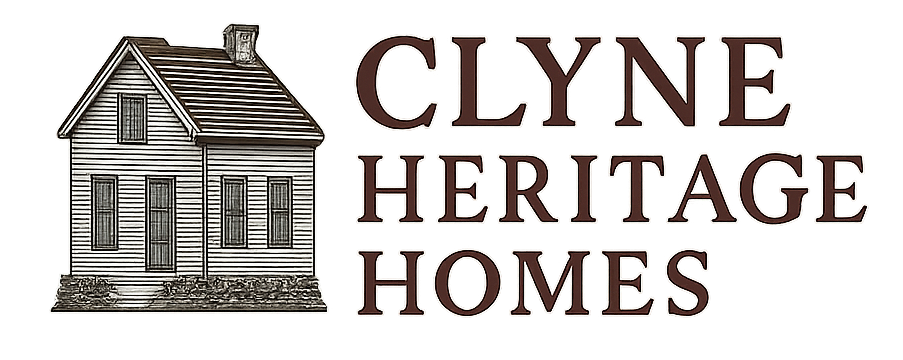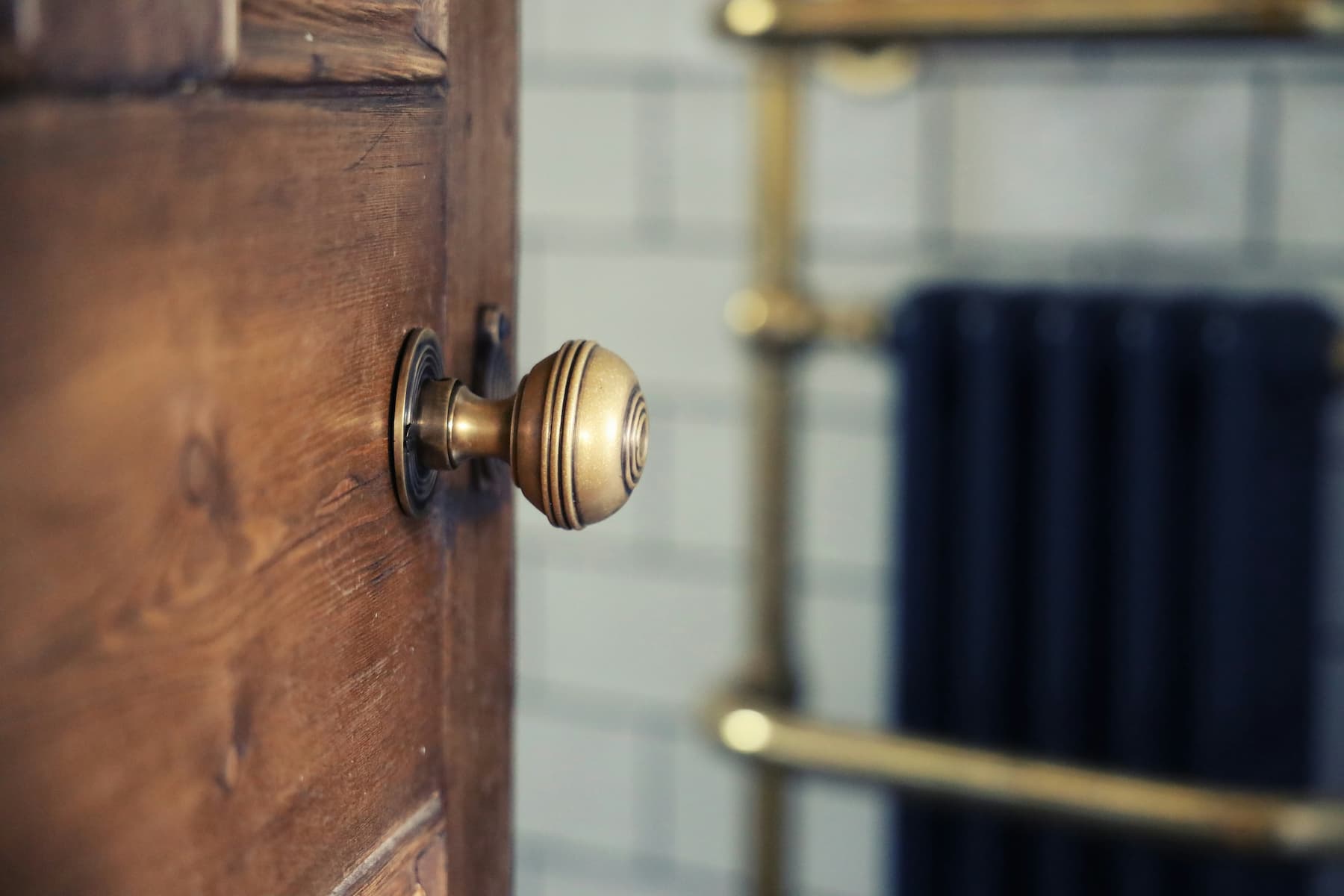It’s often the smallest details that make the biggest difference in heritage home restoration. While dramatic architectural features might capture immediate attention, it’s the hardware—doorknobs, cabinet pulls, hinges, house numbers, and light fixtures—that creates the cohesive authenticity that distinguishes a thoughtfully restored mid-century home from a generic renovation.
Yet sourcing period-appropriate hardware presents unique challenges. Original pieces may be damaged, missing entirely, or insufficient for your needs. Tracking down authentic replacements often feels like an archaeological expedition—requiring patience, research, and a network of specialized resources.
At Clyne Heritage Homes, we’ve compiled this comprehensive guide to help you navigate the sometimes confusing world of mid-century hardware sourcing, whether you’re looking for exact vintage matches or quality reproductions that honor your home’s architectural integrity.
Understanding Mid-Century Hardware Characteristics
Before beginning your search, it helps to understand the distinctive characteristics of mid-century hardware:
Materials and Finishes
Common Materials:
- Brushed or satin aluminum
- Brass (often with clear lacquer finish)
- Stainless steel
- Copper and bronze
- Bakelite and other early plastics
- Ceramic (particularly for knobs)
Typical Finishes:
- Satin or brushed rather than highly polished
- Anodized aluminum in various colors
- Enamel coating in signature mid-century hues
- Natural patina on copper and bronze
- Combination materials (metal with plastic or ceramic)
Design Characteristics
Mid-century hardware typically featured:
- Clean, geometric forms
- Minimal ornamentation
- Emphasis on function
- Integration with architectural elements
- Innovative use of new manufacturing techniques
- Distinctive shapes (starburst, atomic, boomerang motifs)
“Hardware in mid-century homes wasn’t an afterthought—it was an integral part of the design language,” explains architectural historian Margaret Chen. “Architects and builders chose hardware that complemented the home’s overall aesthetic while embracing the new manufacturing capabilities of the post-war era.”
Assessing Your Needs: Inventory Before Shopping
Before diving into sourcing, create a detailed inventory of your hardware needs:
- Document existing original hardware
- Photograph each type from multiple angles
- Measure dimensions precisely
- Note materials and finishes
- Record any manufacturer markings or model numbers
- Assess condition and function
- Identify missing elements
- Check for inconsistencies suggesting replacements
- Look for empty mounting holes indicating removed hardware
- Research your home’s model or architect for clues about original specifications
- Determine reproduction vs. vintage preference
- Consider durability requirements for frequently used items
- Assess budget constraints (some vintage pieces command premium prices)
- Evaluate authenticity priorities for different areas of your home
This inventory becomes your shopping guide, helping you recognize appropriate pieces when you encounter them and avoid expensive mistakes.
Resources for Vintage Hardware
Architectural Salvage Yards
Architectural salvage yards remain one of the best sources for authentic vintage hardware. These businesses rescue materials from buildings slated for demolition, creating repositories of period-appropriate elements.
Notable Salvage Resources:
- Rejuvenation Salvage (Portland, Oregon) – Specializes in mid-century to present
- Architectural Salvage of San Diego (California) – Extensive hardware collection
- ReHouse Architectural Salvage (Rochester, New York) – Well-organized hardware department
- Olde Good Things (Multiple locations) – High-end architectural elements
- Community Forklift (Hyattsville, Maryland) – Affordable salvaged materials
- Peninsula House Numbers (Melbourne, Australia) – Although not a salvage yard PHN create beautiful house numbers and letters inspired by vintage typography.
Shopping Tips:
- Visit regularly as inventory changes constantly
- Bring your inventory list and measurements
- Take photos of spaces where hardware will be installed
- Purchase matching sets when possible (individual pieces may be hard to match later)
- Inspect functionality carefully before purchasing
Specialized Online Marketplaces
Several online platforms specialize in vintage architectural elements:
Dedicated Vintage Hardware Sites:
- eBay’s Vintage Hardware & Salvage category
- Etsy’s Vintage Hardware shops
- Chairish (premium vintage items)
- 1stDibs (high-end architectural elements)
- Vintage Hardware & Lighting (curated vintage and reproduction pieces)
Search Strategies:
- Use specific terminology (“mid-century brass drawer pull” rather than “old drawer handle”)
- Include measurements in your search
- Search both broad categories and specific manufacturers
- Save searches to receive notifications when new items are listed
- Ask sellers for additional photos and measurements before purchasing
David and Elena, who restored a 1957 Palmer & Krisel home in Palm Springs, created a “hardware hunting” document with photos and measurements of existing pieces. “When we found matching door backplates on eBay, we immediately recognized them because we had all the details at our fingertips,” Elena explains. “That level of preparation makes all the difference in successful online sourcing.”
Estate Sales and Home Auctions
Homes from the mid-century period are increasingly changing hands as original owners downsize or pass away. Estate sales and auctions of these properties can yield treasure troves of period-appropriate hardware:
Finding Relevant Sales:
- Register for estate sale notification services
- Follow estate sale companies on social media
- Check auction listings for mid-century home contents
- Network with real estate agents specializing in mid-century properties
Strategic Approach:
- Arrive early for best selection
- Bring tools for removal if purchasing installed items
- Look beyond obvious areas—check basements and garages for stored extras
- Inquire about unlisted items that might match your needs
Networking with Fellow Enthusiasts
The mid-century renovation community is passionate and collaborative. Connecting with other enthusiasts can lead to valuable hardware sources:
Community Resources:
- Modernism Week events (Palm Springs and other locations)
- Mid-Century Modern Facebook groups
- Regional MCM homeowner associations
- Eichler, Alexander, or other builder-specific networks
- Historic preservation organizations
Michael, restoring a 1962 Streng Brothers home in Sacramento, found his distinctive doorknobs through a Facebook group dedicated to these regional mid-century homes. “Another homeowner had extras stored in their garage for thirty years. They were exactly what we needed and had been less than five miles away all along.”
Resources for Quality Reproductions
When vintage pieces aren’t available or practical, quality reproductions can provide period-appropriate alternatives. The best reproduction sources understand mid-century design principles rather than merely copying popular styles.
Specialized Reproduction Manufacturers
Several companies focus specifically on creating hardware appropriate for mid-century homes:
Mid-Century Specialist Companies:
- Rejuvenation – Extensive line of period-authentic hardware and lighting
- Schoolhouse – Quality reproductions with mid-century influences
- House of Antique Hardware – Period-specific reproduction collections
- Emtek – Contemporary hardware with mid-century design influences
- Nostalgic Warehouse – Reproduction hardware organized by era
- Signature Hardware – Range of mid-century bathroom fixtures and hardware
Evaluation Criteria:
- Material quality and authenticity
- Attention to period-correct details
- Availability of complete matching sets
- Installation compatibility with original mountings
- Finish options appropriate to the period
Custom Fabrication Services
For unique or rare hardware pieces, custom fabrication might be the best solution:
Custom Hardware Resources:
- Local metalworking artisans
- 3D printing services for prototyping or small production runs
- University architecture or design programs (sometimes offer fabrication services)
- Restoration specialists who offer reproduction services
The Wilson family, restoring a 1959 custom home in Connecticut, worked with a metalsmith to recreate the home’s distinctive front door handle after an exhaustive search for a replacement proved fruitless. “Having it custom-made was actually more cost-effective than we expected,” notes homeowner Rebecca Wilson. “And the result is indistinguishable from the original.”
Category-Specific Resources
Different types of hardware often have specialized sources worth exploring:
Door Hardware
Vintage-Inspired Door Hardware Sources:
- Schlage – Their mid-century line includes appropriate styles
- Baldwin – Higher-end door hardware with clean lines
- Emtek – Modern interpretations of mid-century motifs
- Weslock – Affordable reproductions of common mid-century styles
Door Hardware Considerations:
- Security needs may necessitate modern internal mechanisms
- ADA compliance might be required for public or rental properties
- Consider compatibility with existing door preparations
- Finish consistency throughout the home
Cabinet and Drawer Hardware
Cabinet Hardware Resources:
- Häfele – Clean-lined contemporary pulls with mid-century compatibility
- Mockett – Architectural hardware with mid-century influences
- Atlas Homewares – Specific mid-century inspired collections
- Rejuvenation – Period-authentic cabinet hardware
Cabinet Hardware Tips:
- Consider standardizing on currently available sizes to simplify future replacements
- Purchase extra pieces for future needs
- Test ergonomics before committing to house-wide installation
- Look for solid brass or stainless construction for durability
House Numbers and Mailboxes
Address Element Sources:
- Modern House Numbers – Specifically designed for mid-century aesthetics
- Neutra House Numbers (Design Within Reach) – Licensed reproductions of Richard Neutra’s designs
- Address Art – Custom fabrication of period-appropriate numbers
- Modbox USA – Authentic mid-century mailbox designs
“House numbers and mailboxes are the first impression of your home’s period authenticity,” notes preservation consultant James Rodriguez. “They set expectations for the attention to detail visitors will find throughout the property.”
Bathroom and Kitchen Fixtures
Period-Appropriate Fixture Sources:
- Kohler – Maintains archives of historic designs
- American Standard – Offers some legacy designs
- Waterworks – Higher-end period-inspired fixtures
- Kingston Brass – Affordable retro-styled fixtures
- Aqua Vintage – Specializes in vintage-style fixtures
Fixture Adaptation Strategies:
- Consider vintage-look faucets with modern cartridges for reliability
- Use vintage sinks with contemporary faucets for easier maintenance
- Maintain original tub but update shower fixtures for water efficiency
Restoration vs. Replacement: Making the Decision
Sometimes, restoring existing hardware is preferable to replacement. Consider these factors:
When to Restore Original Hardware
- When pieces have historical or architectural significance
- When the patina contributes to the home’s character
- When the design is unique and difficult to replace
- When original finishes are in reasonable condition
Restoration Resources
- Metal refinishing specialists
- Brass polishing and relacquering services
- Ceramic restoration experts
- Specialty cleaners for different materials
Thomas and Sarah, renovating their 1961 home in Denver, chose to restore their original brass door hardware rather than replace it. “The aging process had created a beautiful patina that new hardware couldn’t replicate,” explains Thomas. “A restoration specialist cleaned, repaired, and applied a clear protective coating that preserved that character while making everything functional again.”
Installation and Maintenance Considerations
Proper installation and maintenance ensure your carefully sourced hardware performs well over time:
Installation Best Practices
- Document original installation methods before removal
- Use appropriate tools to prevent damage
- Consider hiring professionals for complex or valuable hardware
- Maintain original mounting holes when possible
- Properly prepare surfaces before installing new hardware
Maintenance for Longevity
- Select appropriate cleaning products for each material
- Establish regular maintenance schedules
- Consider protective coatings for frequently used items
- Address issues promptly before they require major restoration
- Document maintenance procedures for future homeowners
Case Study: A Comprehensive Approach
The Rodriguez family’s experience restoring a 1958 Palmer & Krisel home in San Diego illustrates a successful multi-sourced approach to hardware authenticity:
Their Hardware Strategy:
- Original preservation: Restored and maintained all original bathroom fixtures and cabinet hinges
- Vintage replacement: Sourced period-appropriate door hardware from architectural salvage
- Quality reproduction: Used Rejuvenation’s mid-century line for missing cabinet pulls
- Custom fabrication: Commissioned reproduction house numbers based on original ghosting marks
- Modern with period aesthetics: Selected contemporary light fixtures with mid-century design language
“We developed a hierarchy of authenticity,” explains Elena Rodriguez. “Public spaces and distinctive elements received the most attention to period detail, while behind-the-scenes hardware could be more flexibility sourced.”
Conclusion: Hardware as the Finishing Touch
In mid-century renovation, hardware represents both the finishing touch and the daily tactile connection to your home’s heritage. Through thoughtful sourcing—whether vintage, reproduction, or custom—these elements contribute significantly to the authentic experience of a heritage property.
The process requires patience and persistence, but the results offer satisfaction with every door opened, every cabinet accessed, and every appreciation of your home’s cohesive design integrity. As mid-century architect Charles Moore once noted, “Good buildings come from good people and all problems are solved by good design.” The same might be said for good renovations—they come from dedicated homeowners solving the puzzle of authenticity one hardware piece at a time.
Do you have favorite sources for period-appropriate hardware? Share your recommendations in the comments below to help fellow heritage homeowners in their search for authenticity.



Leave a Reply